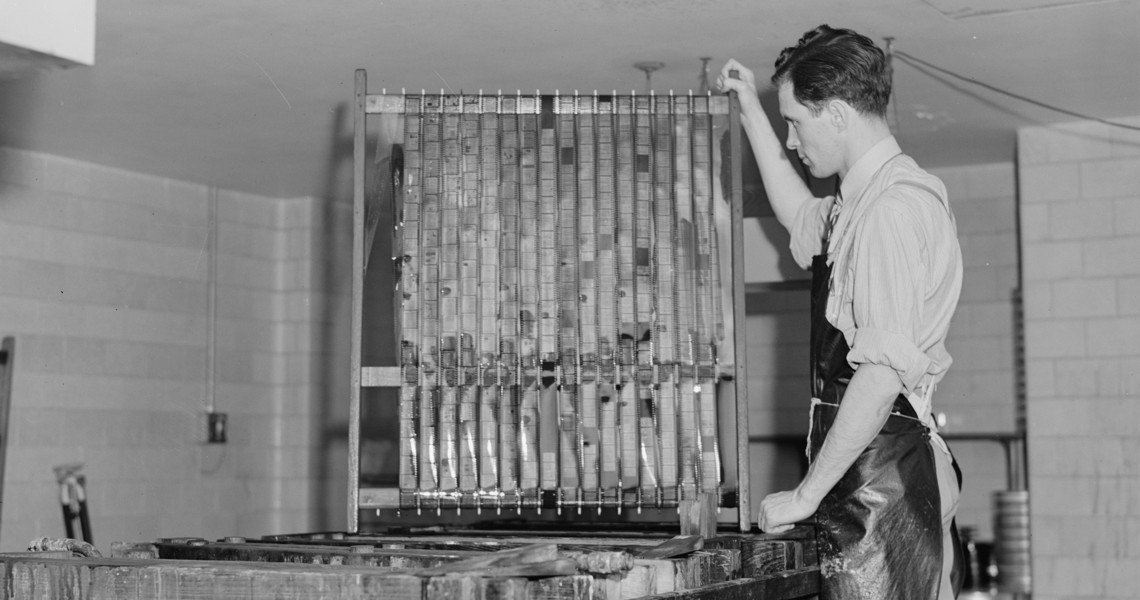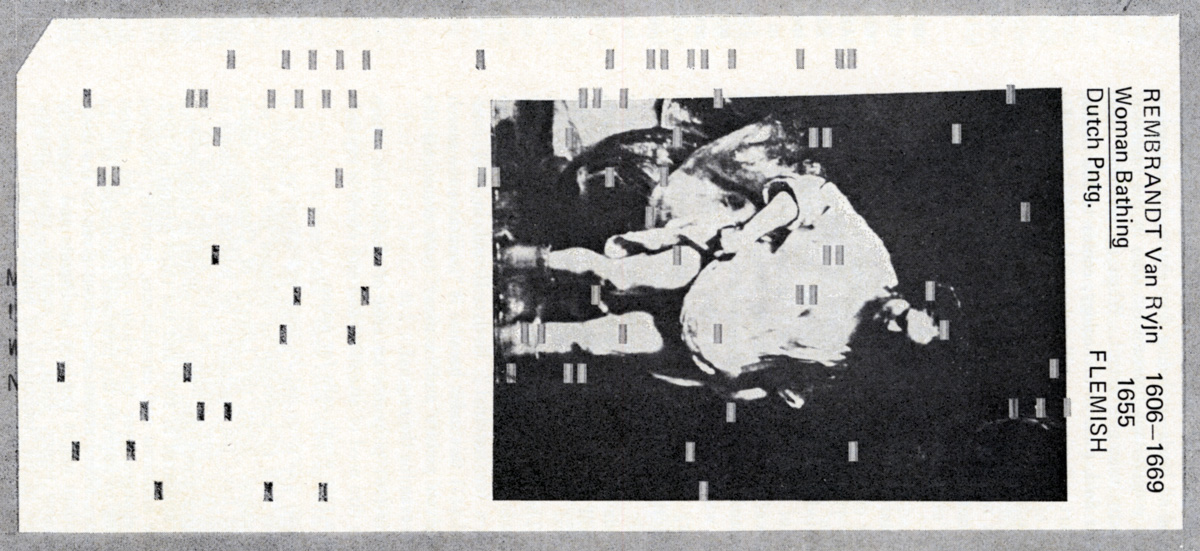Long before the advent of the digital, microfilm held the promise of replacing paper as a means of information storage and knowledge diffusion thanks to the processing and preservation of vast amounts of textual and visual material in the service of libraries, public institutions, and businesses. It was mainly through microfilm that the transition between the materiality of paper and the presumed “immateriality” of the digital took form: its study as a missing link between the world of paper and the digital culture, is indeed vital for the writing of the prehistory of the digital humanities.
Part 1 (1920s to 1950s)
Encapsulating World Culture:
The Rise and the Imaginary of Microfilm
Between the 1920s and the 1950s, the technological developments in photography, combined with important financial investments and intensive debates, gave rise to great expectations in microfilm as a means of modern documentation. Also referred to as “functional” or “textual photography”, microfilm promised unparalleled efficiency, the reduction of production and storage costs and the possibility of making available more, or previously inaccessible visual and textual information.
 Royden Nixon, « Developing microfilm », Washington, D.C., 1942. Library of Congress
Royden Nixon, « Developing microfilm », Washington, D.C., 1942. Library of Congress
While the modern history of microfilm is rooted in Europe, the technology was further elaborated and applied in the United States in form of large-scale copying programs for books, newspapers, manuscripts as well as images. In a close collaboration between public and research institutions and the photographic industry, the United States aspired to take lead in the hope to monopolize on a technology that had the potential of changing the ways in which information was collected, processed and shared on a “global” scale.
 LOT 1525 (détail), microfilmé le 16 janvier 1945. Library of Congress
LOT 1525 (détail), microfilmé le 16 janvier 1945. Library of Congress
This research project explores the technological, cultural, economic and political vectors that led to the rise of microfilm. It examines concrete microfilming projects of textual and pictorial material before, during and after World War II and studies the networks of people and institutions that advanced the development of microfilm, as well as the transnational discussions and international cooperation in the context of UNESCO in the immediate post-war period.
The history of microfilm ties into the medium’s imaginaries present since the invention of photography: the dream of ‘collecting everything’, of providing access to vast archives and of rendering material objects mobile by means of their reproduction. While the history of microfilm is an inherent part of the history of photography, its study also provides important insights relevant to other disciplines, such as library and information sciences, media history and the history of science. It furthermore helps understanding recent developments and the challenges faced by today’s information society.
Part 2 (1950s to 1980s)
On the Verge of the Computer Age:
Microphotography and Image Retrieval Systems
Focussing on the period between the 1950s to 1980s, this second research project addresses the multiples tools developed by the photographic industry and the computer industry, which aimed at improving the management and retrieval of the ever-growing amounts of “micro-images”. It studies the different ways of adding machine-readable data to the images, the progress of the “mechanical reading” on screen as well as the impact of the micro-technology on the spatial conception of libraries and offices, and information society, in general. For this, the research encompasses the study of specific projects of mass reproduction in interaction with different types of electronic devices. The micro-technology sparked great expectations in the intangible future of documentation and the democratization of information and knowledge. While the project explores the cultural history of these imaginaries, it also questions the limits of the photographic medium during the rise of the computer age, in which photography acquired a rather passive role as a storage and preservation medium rather than one of information diffusion.
 Carte perfore?e avec illustration, tire?e de Elizabeth M. Lewis, « A Graphic Catalog Index », American Documentation, vol. 20, no 3, 1969, p. 242.
Carte perfore?e avec illustration, tire?e de Elizabeth M. Lewis, « A Graphic Catalog Index », American Documentation, vol. 20, no 3, 1969, p. 242.
Bridging information studies and the cultural history of media and science, this research project proposes a extended history of photography as information technology and contributes to the writing of the history of digital humanities.
Team
- Estelle Blaschke (Unil, Centre SHC, chercheuse Senior)
- Olivier Lugon (Unil, Centre SHC et Section d’histoire et esthétique du cinéma, professeur)
- Davide Nerini (Unil, Centre SHC, doctorant)
Le projet de recherche est rattaché au Centre des sciences historiques de la culture, Faculté des lettres, UNIL
Publications
- Dossier « Câble, copie, code. Photographie et technologies de l’information », Transbordeur (dir. Estelle Blaschke et Davide Nerini), n. 3, 2019, pp. 6-145.
Vidéeo de présentation de l’ouvrage avec Estelle Blaschke et Davide Nerini.
- « Installed for your protection. Mikrofilm als Medium der Bürokratie », Archiv für Mediengeschichte (ed. Friedrich Balke, Bernhard Siegert, Joseph Vogl)
- « Die Geschichte des Mikrofilms (1920er bis 1950er Jahre) », Fotogeschichte : Beiträge zur Geschichte und Ästhetik der Fotografie, 140, été 2016